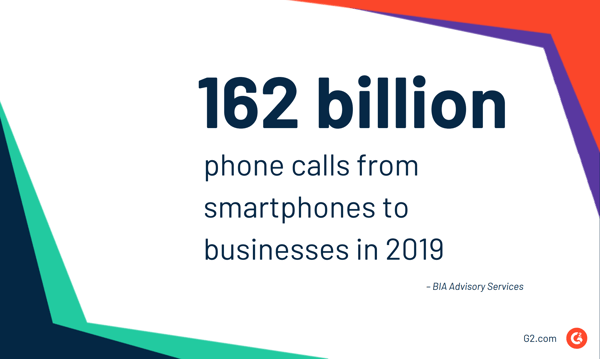Top publishers and tech companies continue to declare protecting consumer privacy a pressing priority, but the steps being taken to protect consumers bring headaches and challenges to a lot of unprepared marketers.
For example, Google limited advertisers’ use of cookies in its Chrome browser and raised the bar “on transparency, choice, and control in digital advertising” by offering consumers improved privacy features.
While Google’s changes to its Chrome browser extend the advertising challenge to the consumer masses, it’s just another example of a tech giant limiting the tracking that fuels success in retargeting, programmatic and other types of digital advertising. After all, Apple’s Safari and Mozilla’s Firefox already block third-party trackers by default.
Most digital advertising relies on tracking consumers from site to site, but as tracking and advertisers’ use of cookies becomes less viable, advertisers must rely less on this third-party data and look to other proven ways to target.
While these privacy standards obviously serve consumers, they also benefit walled gardens like Facebook and Google. Facebook makes troves of user data available to advertisers who want to target ads to consumers based on interests, affiliations and more. Google continues to connect advertisers with consumers based on expressed intent via search queries. These tech behemoths don’t rely on third-party trackers to provide advertisers with targeting and scale — so they will continue to help advertisers do well in this less-trackable era.
Advertisers skilled at targeting ads with first and second-party data should also clear this new privacy hurdle with greater ease. They’ll be more likely to tap the second-party targeting data offered by walled gardens and take a comprehensive approach to mining and applying all the first-party data available to them.
Above all, as trackers and cookies become less functional, advertisers must rely less on third-party data and shift focus to a growing source of first-party data: consumer phone calls. Phone calls are a powerful – and often untapped – source of valuable first-party data that businesses can leverage to gain information about customers, make informed marketing optimizations, and ultimately fill the data void.
Why is first-party data so important?
While first-party data now help advertisers comply with these new game-changing privacy regulations, many have been using it to target ads with great success for years.
It delivers results because it reflects each customer’s unique situation, needs, and interests. Plus, it can be used to build more personalized, micro-targeted ad campaigns and also combines well with second-party data like Custom Audiences on Facebook and Instagram. First-party data also help advertisers recognize customers across channels and deliver a more personalized experience at every touchpoint.
RELATED: Learn more about how first-party data differs from second- and third-party data – and where each can come into play in your marketing strategy.
According to a MightyHive and eMarketer study, digital marketers were tapping into just 47% of their company’s first-party data potential. Since third-party data trackers are more and more limited, taking advantage of the remaining 53% of first-party data is crucial. And this isn’t a surprise to marketers. A 2018 study revealed that 85% of brand marketers said that increasing their use of first-party was a high priority.
And why not? A lot of untapped first-party data still exist for many businesses, especially those that rushed to supplement first-party data with third-party data instead of thoroughly ramping up their focus on first-party data.
Brands want to deliver that personalized experience across all stages of a marketing campaign. If you’re one of these marketers ready to boost your usage of first-party data, make sure phone calls are on your radar.
Consumer phone calls are on the rise
Consumers are increasingly turning to phone conversations as part of their buyer’s journey. In 2019, there were projected to be 162 billion phone calls made from smartphones to businesses in 2019.

Our purchase behavior is changing. People are researching products and services on their smartphones, and when they choose to call a business, they’re looking for more information to make a decision, connect with a real person, and get personalized assistance. This is especially true for complex, expensive, or urgent purchases. These industries often include insurance, auto repair, healthcare, financial services, home services, and others.
As consumers continue to educate themselves online, inbound phone calls have become more centered on “how to buy” queries versus “what to buy” questions. These conversations are an invaluable source of information for marketers. Your customer base is telling you what information they want over the phone, including first-party data on customer intent, product and service interest, purchase urgency, and the outcome of the call.
What can marketers actually do with this first-party data from consumer calls?
As an increasing number of data privacy regulations go into effect, we’re seeing a concerted shift in how marketers leverage data. Rather than relying on third-party brokers who may be breaching data regulations, marketers are tapping into more of their first-party data.
When you turn phone conversations into structured first-party data with a conversation intelligence platform, you can optimize your marketing across channels to drive more high-value sales calls, deliver more personalized online and offline experiences, and convert more callers to customers.
A conversation intelligence platform uses the power of AI and machine learning to digitize these consumer calls and gain insights at scale helps marketers optimize advertising across all advertising channels, improve the omnichannel experience, and even improve the call experiences themselves.
The first-party data from these conversations is transformed into valuable insights on caller intent, lead quality, urgency, product/service interest, sales agent performance, and call outcome.
Marketers can then use these insights to:
| Accurately measure the impact of marketing spend on customer acquisition |
| Optimize spend, messaging, and targeting for what drives the most customers at the lowest CPL |
| Determine whether to retarget specific callers or use them in lookalike campaigns – and with which ads |
| Measure how each location or agent is handling calls to detect and correct issues like unanswered calls or agents not following scripts before they harm revenue |
Ultimately, marketers can align what insights they can get from consumer calls to their specific needs, which can differ depending on their industry, their marketing objectives, and the tech stack they have in place. Interested in learning more about how you can dig into call analytics and leverage the first-party data from customer conversations to increase the impact of your marketing on ROI?
RELATED: Dig into the 10 Call Analytics Reports That Will Change Your Marketing
Conclusion
As the data landscape is shifting and third-party data is harder and harder to come by, it’s vital for businesses to take advantage of the first-party data at their fingertips. Consumer phone calls provide a treasure trove of valuable information for your business. Now more than ever, it’s time to listen.
Keep learning how to track data and more about the overall data landscape with G2's data analytics hub – chock full of 45 resources to boost your knowledge.

 by Derek Andersen
by Derek Andersen
 by Christiana Marouchos
by Christiana Marouchos
 by Meenakshi
by Meenakshi